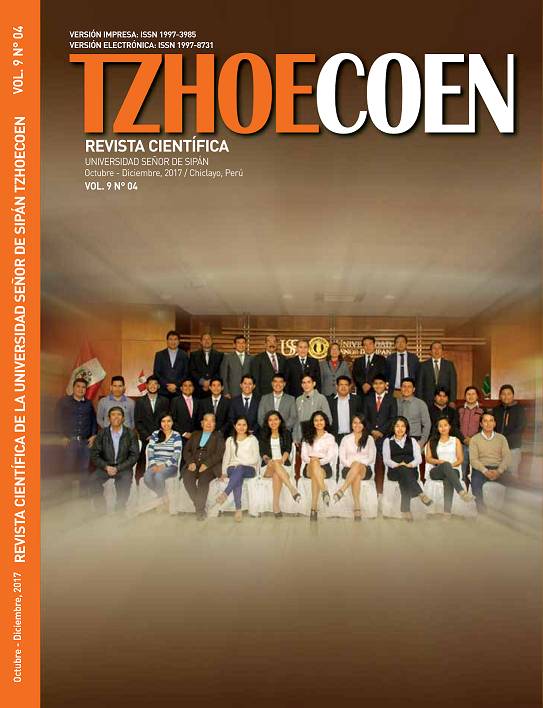VARIACIÓN DE LA DIFUSIVIDAD TÉRMICA DEL LOCHE (Cucurbita moschata Duch.), LA PAPA (Solanum tuberosum L.) Y EL CAMOTE (Ipomoea batatas L.) DURANTE EL CALENTAMIENTO
DOI:
https://doi.org/10.26495/rtzh179.423731Palabras clave:
Difusividad térmica, Evaluación de modelos predictivos.Resumen
El objetivo de esta investigación fue evaluar la variación de la difusividad térmica del loche, la papa y el camote durante el calentamiento. También se evaluó la bondad de ajuste con los diferentes modelos predictivos que relacionan la variación de la difusividad térmica con respecto a la temperatura. Los valores de difusividad térmica efectiva se obtuvieron utilizando la curva de calentamiento de las muestras a las temperaturas de 40, 50, 60, 70, 80 y 90°C y se compararon los valores experimentales con diferentes modelos predictivos de difusividad térmica. Se determinó que el loche transfiere más rápido el calor que la papa y el camote. Los valores de difusividad térmica del loche variaron entre: 1,49 a 1,57 x 10-7 m2/s; para la papa, los valores de difusividad térmica variaron entre: 1,33 a 1,46 x 10-7 m2/s y para el camote variaron entre: 1,36 a 1,39 x 10-7 m2/s. Con respecto a los modelos predictivos; el modelo propuesto por Choi y Okos ajustó correctamente los valores de difusividad térmica del loche. Para el caso de papa y camote, se observó que los valores de difusividad térmica disminuyeron cuando se alcanzó las temperaturas de gelatinización de los almidones.
Referencias
Ahromrit, A., & Nema, P. K. (2010). Heat and mass transfer in deep-frying of pumpkin, sweet potato and taro. Journal of Food Science and Technology, 47(6), 632–637. http://doi.org/10.1007/s13197-010-0100-7
AOAC. (2000). Official methods of analysis (17th ed). Gaithersburg, MD: Association of Official Analytical Chemists.
Baïri, A., Laraqi, N., & De María, J. M. G. (2007). Determination of thermal diffusivity of foods using 1D Fourier cylindrical solution. Journal of Food Engineering, 78(2), 669–675. http://doi.org/10.1016/j.jfoodeng.2005.11.004
Betta, G., Rinaldi, M., Barbanti, D., & Massini, R. (2009). A quick method for thermal diffusivity estimation: Application to several foods. Journal of Food Engineering, 91(1), 34–41. http://doi.org/10.1016/j.jfoodeng.2008.08.003
Choi, Y., & Okos, M. . (1986). Effects of temperature and composition on the thermal properties of foods. In M. Le Maguer & P. Jelen (Eds.), Food Engineering and Process Applications , Vol. 1, Transport Phenomena (pp. 93–101). London: Elsevier Applied Science.
Erdoğdu, F. (2005). Mathematical approaches for use of analytical solutions in experimental determination of heat and mass transfer parameters. Journal of Food Engineering, 68(2), 233–238. http://doi.org/10.1016/j.jfoodeng.2004.05.038
Erdoğdu, F. (2008). A review on simultaneous determination of thermal diffusivity and heat transfer coefficient. Journal of Food Engineering, 86(3), 453–459. http://doi.org/10.1016/j.jfoodeng.2007.10.019
Erdoğdu, F., Linke, M., Praeger, U., Geyer, M., & Schlüter, O. (2014). Experimental determination of thermal conductivity and thermal diffusivity of whole green ( unripe ) and yellow ( ripe ) Cavendish bananas under cooling conditions. Journal of Food Engineering, 128, 46–52. http://doi.org/10.1016/j.jfoodeng.2013.12.010
Farinu, A., & Baik, O.-D. (2007). Thermal properties of sweet potato with its moisture content and temperature. International Journal of Food Properties, 10, 703–719.
García, M. R., Prieto, I. G.-S., Barrientos, C. E., Rebatta, F. B., & Morón, L. G. (2009). Tablas peruanas de composición de alimentos (8 a). Lima: Ministerio de Salud, Instituto Nacional de Salud.
Huamán-Castilla, N. L., & Salas-Valerio, W. F. (2012). Evaluación de la difusividad térmica en granos de quinua (Chenopodium quinoa Willd.) y cañihua (Chenopodium pallidicaule Aellen). CienciAgro, 2(3), 331–340.
INDECOPI. (2010). Denominación de origen zapallo loche (Cucurbita moschata Duch.). Lambayeque: Presidencia del Consejos de Ministros.
Martens, T. (1980). Mathematical model of heat processing on flat containers. Katholeike University, Leuven, Belgium.
Mohamed, I. O. (2003). Computer simulation of food sterilization using an alternating direction implicit finite difference method. Journal of Food Engineering, 60(3), 301–306. http://doi.org/10.1016/S0260-8774(03)00051-7
Panda, H. (2014). The complete Book on fruits, vegetables and processing. India: NIIR Project Consultancy Services.
Rahman, S., & Al-Saidi, G. (2009). Thermal Diffusivity of Foods: Measurement, Data, and Prediction. In M. S. Rahman (Ed.), Handbook of Food Preservation (2nd ed.). Boca Raton, FL: CRC Press, Taylor & Francis.
Rao, M. ., Barnard, J., & Kenny, J. (1975). Thermal conductivity and thermal diffusivity of process variety squash and white potatoes. Transactions of the ASAE, 18, 1188–1192.
Rice, P., Selman, J. D. and Abdul-Rezzak, R. K. (1988). Effect of temperature on thermal properties of “Record” potatoes. International Journal of Food Science and Technology, 23, 281–286. http://doi.org/10.1016/j.jallcom.2014.10.191
Vidaurre-ruiz, J. M., & Castañeda-muñoz, J. S. (2014). Determinación de los parámetros de transferencia de calor durante el calentamiento del loche (Cucurbita moschata Duchesne) utilizando soluciones numéricas y analíticas. Ingeniería: Ciencia, Tecnología E Innovación, 1(2), 94–105.
Yu, D. U., Shrestha, B. L., & Baik, O. D. (2015). Thermal conductivity , specific heat , thermal diffusivity , and emissivity of stored canola seeds with their temperature and moisture content. Journal of Food Engineering, 165, 156–165. http://doi.org/10.1016/j.jfoodeng.2015.05.012




















